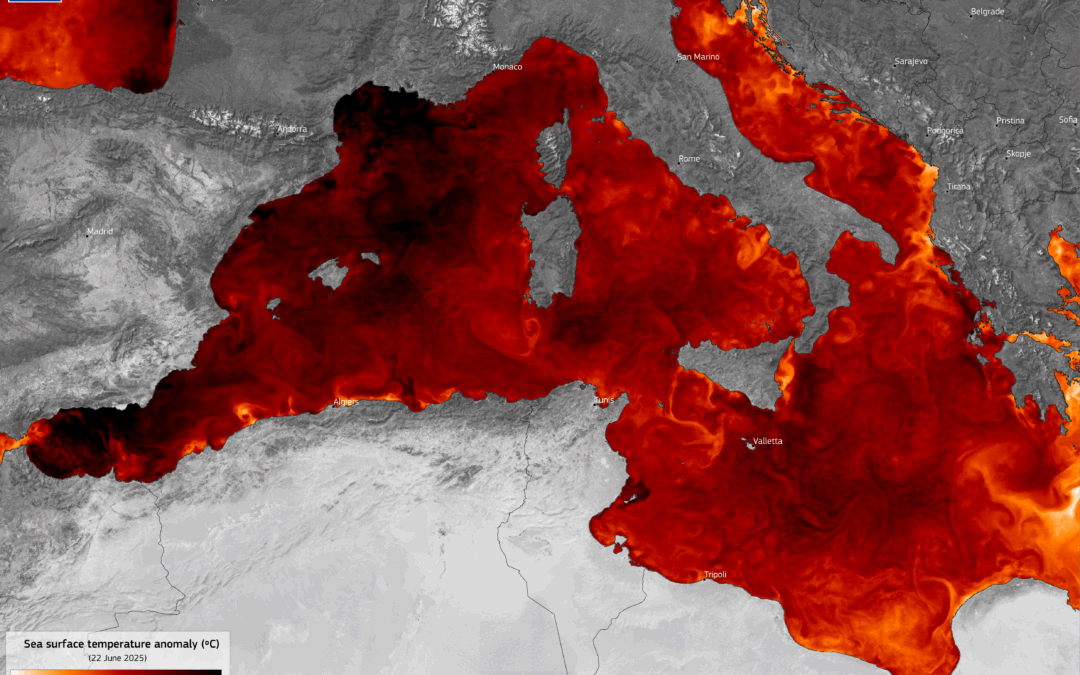On June 22nd, the Copernicus Marine Service recorded sea surface temperature anomalies. Observing the Copernicus map, one can see that the dark red areas indicate temperatures more than 5°C above the seasonal average. The most intense warming was observed in the western Mediterranean basin, including the Balearic Sea and the Tyrrhenian Sea.
This is a marine heatwave linked to the effects of climate change, known as a Marine Heatwave (MHW).
The Copernicus Marine Service delivers free, open-access marine data to support the monitoring of ocean health. Tracking sea surface temperature (SST) anomalies is essential for better understanding the impacts of climate change, anticipating extreme weather events, and managing risks to marine biodiversity and coastal communities.

